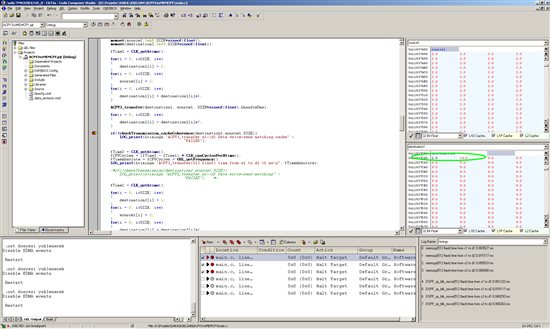Hi all,
I am using TMS320C6747 DSP which has a 64x+ core.
In DSP Megamodule document (spru871j) it says that, there is an L2 memory controller which handles cache coherency between L1D and L2 (when using L2 as SRAM)
I am using ACPY3 interface which uses IDMA channel to copy memory from one loc to another. When I copy something with this API to L2 from SDRAM when the L2 data is in cache(L1D), cache is not invalidated by L2 controlled as I expect. But when I use CACHE commands to invalidate or wb data, it is Ok.
So, isn't there an L2 controller that handles coherency between L1D and L2? Or should I make some configurations to enable it?
Thanks...


